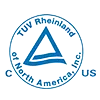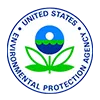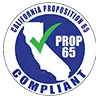Water is the essence of life. It's a basic necessity that we often take for granted, especially in developed countries where clean, safe water is readily available. But what happens when disaster strikes and your regular water supply is disrupted? This is where emergency water supplies and purification methods come into play.
Understanding the Importance of Emergency Water Supplies
During a water-related emergency or outbreak, safe drinking water may not be available. This could be due to a natural disaster like a hurricane or flood, or a man-made disaster like a water pipe breakage. In such situations, having an emergency water supply is crucial.
The Centers for Disease Control and Prevention (CDC) recommends storing at least 1 gallon of water per person per day for 3 days for drinking and sanitation. If possible, try to store a 2-week supply. Pregnant women, people who are sick, pets, or those living in a hot climate may need more water.
Creating and Storing an Emergency Water Supply
Unopened, commercially bottled water is the safest and most reliable source of water in an emergency. If you do not have bottled water, you can make your water safe to drink by using clean containers to collect and store your water.
When choosing a container for storing water, it's best to use food-grade water storage containers. These containers will not transfer toxic substances into the water. If you can't use a food-grade water storage container, make sure the container you choose has a top that can be closed tightly, is made of durable, unbreakable materials (not glass), and has a narrow neck or opening, if possible, so water can be poured out.
Before filling the container with water, clean and sanitize it. This can be done by washing the container with soap, rinsing it completely with water, and then sanitizing it with a solution made by mixing 1 teaspoon of unscented liquid household chlorine bleach in quart (4 cups) of water.
Purification Methods
In situations where you can't boil water, you can make small quantities of water safer to drink by using a chemical disinfectant, such as unscented household chlorine bleach, iodine, or chlorine dioxide tablets.
Boiling is the surest method to kill disease-causing germs, including viruses, bacteria, and parasites. If the water is cloudy, first filter it through a clean cloth, paper towel, or coffee filter or allow it to settle. Then, draw off the clear water and bring it to a rolling boil for 1 minute (at elevations above 6,500 feet, boil for 3 minutes). Let the boiled water cool and store it in clean sanitized containers with tight covers.
If boiling is not possible, you can disinfect the water using unscented household chlorine bleach. The bleach should contain between 5% and 9% of sodium hypochlorite. Add the appropriate amount of bleach, stir the mixture well, and let it stand for at least 30 minutes before you drink it.
Remember, these methods will not destroy other contaminants, such as heavy metals, salts, and most other chemicals. If you suspect your water is contaminated with fuel or chemicals, contact your local health department for specific advice.
In conclusion, preparing for a water-related emergency is a crucial aspect of disaster preparedness. By understanding the importance of emergency water supplies and knowing how to store and purify water, you can ensure that you and your family have access to safe drinking water when disaster strikes.














